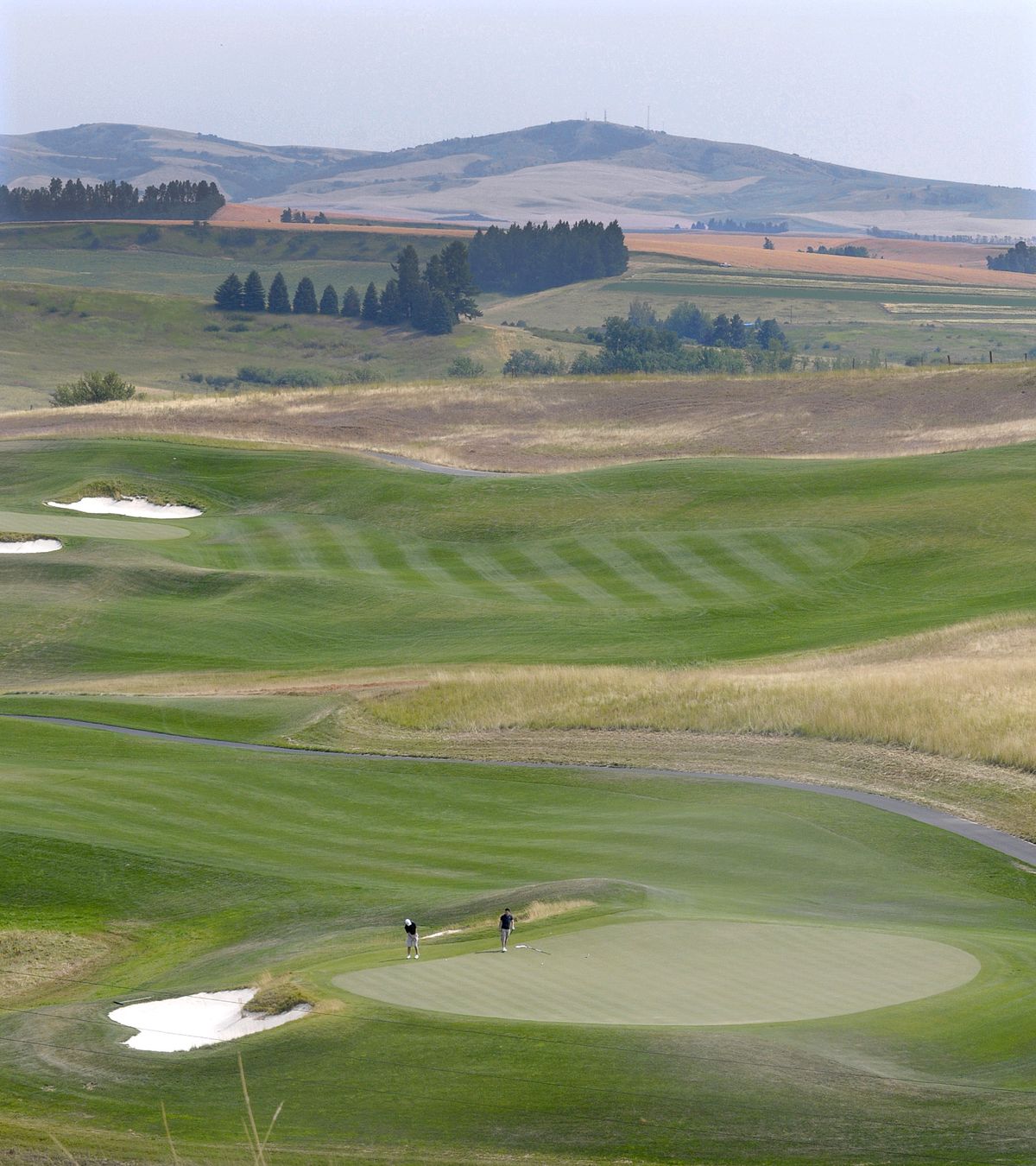Now that spectacular Palouse Ridge has been built, will they come?

Midway through a round at Palouse Ridge Golf Course – after you’ve already marveled at greens true and fair, cushy sand that almost makes it a pleasure to find a bunker and velvety fairways which, for all the undulation, surrender a decent number of forgiving lies – you find yourself taking in the view from the 10th tee.
At which point even a staunch Husky might be moved to whisper to himself, “Go Cougs.”
It might not be a rave from Golf Digest and other experts – but Palouse Ridge is already getting those. Then again, it might be better.
Spectacular and welcoming, Washington State University’s 2-year-old course was done right – and stands to win over virtually any golfer who plays it, and bring him back.
The challenge is attracting enough of those players.
The revelation that Palouse Ridge expects to lose in the neighborhood of $200,000 this year – after a $322,000 loss in 2009 that was more than double what had been projected – is a stark reminder of that challenge, even when taking into account the normal start-up hiccups, the uncooperative weather of the past two springs and the general sad state of the economy, golf and otherwise.
For Palouse Ridge was always a difficult concept to grasp: a destination golf course in what, frankly, has never been regarded as a destination locale.
Calm down, Pullman. Your considerable charms are not being dismissed here.
But the fact is the Palouse isn’t Vacationland USA. Perhaps some of its recreational opportunities have been undersold over the years, but whether it’s a family getaway or a big-boys weekend, this isn’t usually the first place that comes to mind – outside of a few football weekends in the fall.
“We’re seeing a lot more action in the summer,” insisted Mel Taylor, WSU’s executive director of real estate and external affairs, “but I know what you’re saying. When I started here nine years ago, it was like Mayberry RFD in the summer.”
On top of which, the modest Palouse population limits the local audience for high-end golf – high end for the experience as well as by the inexpensive standards of public courses in the Inland Northwest.
So while the golf course itself is a finished product, the marketing of it remains a work in progress.
And, at least for the time being, it can afford to be.
“The golf course is paid for – that helps a lot,” said Tom Isaak, president of CourseCo, the California concern that operates Palouse Ridge. “You’re not trying to amortize some huge debt. If you couldn’t do it on that basis, this would have been an iffy enterprise. You don’t have the same burden as a resort.”
The $8.4 million price tag was covered, Taylor said, through a combination of fund-raising and sales of unencumbered real estate. Also often overlooked is that it’s a working course for teaching and research within WSU’s turf grass program and other departments.
That doesn’t mean there isn’t some urgency to improving the bottom line.
“We think next year, we’ll lose $150,000-200,000,” Isaak said, “and the following year is when we anticipate breaking even. We’d be closer than that had we not had the two springs we just had. The shoulder periods – spring and fall – have significant bearings on any year’s revenues.”
Yet the challenges of user base and location remain. The course tweaked its off-peak pricing and expanded its “resident” status since opening, but the key will always be increasing traffic from beyond the region.
One way is to partner up with like courses of the region – in particular the Coeur d’Alene Resort and Circling Raven to the north.
“That’s a nice little triptych,” Isaak said. “You have three world-class courses within an hour and a half, in an area where you can stay in a hotel for $110 a night and eat great food. That’s a pretty good alternative to a Bandon Dunes where it costs you an arm and a leg.”
But Taylor wonders if the course itself might be changing impressions of the Palouse as, well, a destination. He noted specifically the fast-tracking of a hotel/conference center on WSU property that he believes will be realized within three years.
“There wasn’t any interest in that until there was a championship golf course here,” he said, “at least as far as doing it with other people’s money.
“I think it’s changing the dynamic. There is plenty to do here, but it’s undermarketed, and the lack of a confererence center here has had us holding events in Spokane and Seattle that we could have had here. The golf course is a key component of that.”